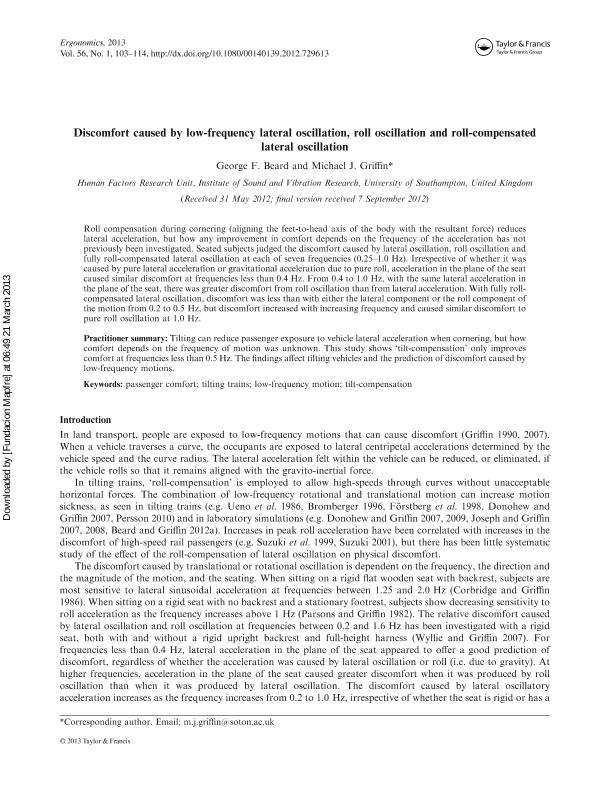Discomfort caused by low-frequency lateral oscillation, roll oscillation and roll-compensated lateral oscillation

Contenido multimedia no disponible por derechos de autor o por acceso restringido. Contacte con la institución para más información.
| Tag | 1 | 2 | Valor |
|---|---|---|---|
| LDR | 00000cab a2200000 4500 | ||
| 001 | MAP20130010212 | ||
| 003 | MAP | ||
| 005 | 20130321173335.0 | ||
| 008 | 130321e20130107esp|||p |0|||b|spa d | ||
| 040 | $aMAP$bspa$dMAP | ||
| 084 | $a875 | ||
| 100 | 1 | $0MAPA20130003887$aBeard, George F. | |
| 245 | 1 | 0 | $aDiscomfort caused by low-frequency lateral oscillation, roll oscillation and roll-compensated lateral oscillation$cGeorge F. Beard, Michael J. Griffin |
| 520 | $aRoll compensation during cornering (aligning the feet-to-head axis of the body with the resultant force) reduces lateral acceleration, but how any improvement in comfort depends on the frequency of the acceleration has not previously been investigated. Seated subjects judged the discomfort caused by lateral oscillation, roll oscillation and fully roll-compensated lateral oscillation at each of seven frequencies (0.251.0 Hz). Irrespective of whether it was caused by pure lateral acceleration or gravitational acceleration due to pure roll, acceleration in the plane of the seat caused similar discomfort at frequencies less than 0.4 Hz. From 0.4 to 1.0 Hz, with the same lateral acceleration in the plane of the seat, there was greater discomfort from roll oscillation than from lateral acceleration. With fully roll-compensated lateral oscillation, discomfort was less than with either the lateral component or the roll component of the motion from 0.2 to 0.5 Hz, but discomfort increased with increasing frequency and caused similar discomfort to pure roll oscillation at 1.0 Hz. | ||
| 773 | 0 | $wMAP20100019818$tErgonomics : the international journal of research and practice in human factors and ergonomics$dOxon [United Kingdom] : Taylor & Francis, 2010-$x0014-0139$g07/01/2013 Volumen 56 Número 1 - enero 2013 , p. 103-114 |

